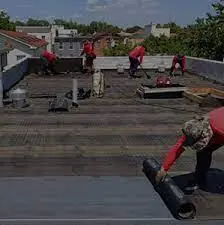Replacing a roof is a significant investment that not only enhances the aesthetic appeal of a property but also increases its overall value and ensures long-term protection for your home or business. A new roof safeguards against leaks, weather damage, and structural issues, providing peace of mind and reducing the likelihood of costly repairs in the future. The process begins with a thorough inspection of the existing roof to evaluate its condition, identify any underlying issues, and determine the most suitable materials, design, and layout for the replacement. This planning stage is essential to ensure the new roof meets both functional and visual requirements.
During installation, the old roofing material is carefully removed, and any damaged decking or structural components are repaired or replaced. New underlayment is applied to provide an additional layer of protection against moisture and temperature changes. High-quality shingles, tiles, or other roofing materials are then installed according to the manufacturer’s guidelines and industry best practices. Proper attention is given to flashing, sealing, and ventilation to prevent leaks, enhance energy efficiency, and extend the lifespan of the roof. Every step of the installation process is performed with precision to ensure that the roof not only looks great but also performs reliably under all weather conditions.
“A structured replacement process ensures a durable and leak-free roof.”

Investing in professional roof replacement also comes with long-term benefits, including improved insulation, reduced energy costs, and increased curb appeal. Whether you are replacing a residential or commercial roof, hiring experienced roofing professionals ensures the work is completed safely, efficiently, and to the highest standards, protecting your investment for many years to come.


